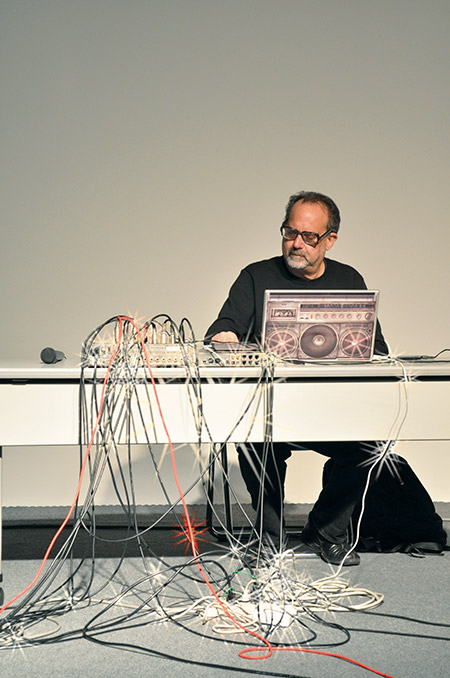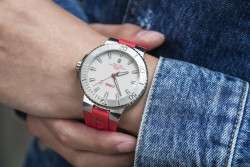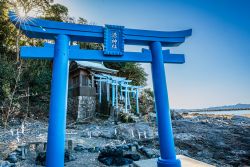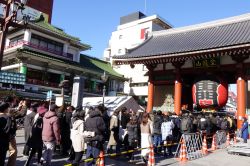
Originally published on metropolis.co.jp on June 2014

Computer music pioneer Carl Stone’s career took a left turn when he joined the Department of Information Media at Chukyo University in Aichi. Stone had begun to explore sonic collages via cassettes and turntables in the 1970s, and in the ’80s innovated the use of laptops to create live electronic music. Invitations to Japan led to a faculty position, and Stone now splits his time between Japan and the US. The native Californian spoke to Metropolis about the computer’s evolving role in music and how Japan shapes his sound.
Computer music is now omnipresent. What have been the biggest changes since the ’70s?
Miniaturization and portability. When I was a student we had a synthesizer studio that probably cost about a half-million dollars. Now that studio’s power can be roughly represented in a ¥5,000 iPad app. I used to tour with about 50kg of gear. Now all I take is a laptop, audio interface and toothbrush.
Is the computer now just another musical instrument?
It depends on how one chooses to use it. It definitely can be an instrument, but it can also be a tool for composing, for recording and more.
Much computer music lacks traditional identifiers of music such as melody and rhythm. What differentiates “sound” from “music”?
In John Cage’s theory, nothing. Not only did he feel that any sound could be repurposed as music, but in fact the distinction between even unintended sound and music was artificial. I remember listening to a conversation between Cage and Morton Feldman, another great composer. Feldman was complaining about the time he was walking on the shore, lost in thought, and some people were blasting music from a radio. Cage, who often used unintended sounds including random radio transmissions, laughed and said that it wouldn’t have bothered him because, “I would think they were just playing one of my pieces.”
Tell us about two or three of your defining works, and what you were trying to achieve with them.
Probably my most notorious work is called “Shing Kee,” which takes a small sample of German art-song sung in English by a Japanese pop singer, and methodically stretches it until it becomes a new sonic world. A more current series of pieces I’ve done recently use an electronic process I call “skinning,” where the shape and rhythm of one piece of music is “wrapped” around the harmony of another. Some very interesting things can result. Probably the best example of this is in my piece “Al-Noor.”
How have your many years in Japan influenced your music and career?
In many ways. First of all, just being in Japan serves as a place of constant stimulation, not only because of the arts scene but because of the fascinating urban soundscape. I rarely go outside without a handy portable recorder. But also the music scene itself here is interesting, and I’ve found a lot of musicians I enjoy playing with. I’ve been lucky to improvise with great musicians like Yoshihide Otomo, Yasuaki Shimizu and Yuji Takahashi.
What are some of the challenges you face as a foreigner on the faculty of a Japanese university?
The usual issues of language and culture differences, which of course get mediated over time. I was a freelance composer for many years before I took this job, so I had very little experience in academia besides my early years as a student at an American art school. Academic bureaucracies are problematic enough, but the Japanese seem to have raised them to an art form.
Japan is a hub of computer music. Tell us about a few favorite Japanese computer music composers.
Electronic music has a lot of important history here, going back to pioneering work by Toru Takemitsu, Yuji Takahashi, Akira Ikufube. These days I’m enjoying music by Ryoji Ikeda, Satanic Pornocultshop and Chihei Hatakeyama.
Tell us about your upcoming performances and new groups.
I’ll play on June 6 with Brian O’Reilly from Singapore, who performs as Black Zenith. In the fall, I’ll play with new group Tapakasa, featuring the great Akira Sakata on sax, Yumiko Tanaka on shamisen and Pearl Alexander on bass. We performed earlier this year as an experiment and liked the results so much we are planning to keep it going.
Ftarri, Jun 6. See concert listings (popular) for details.







